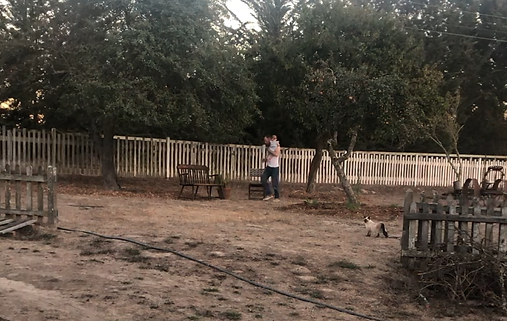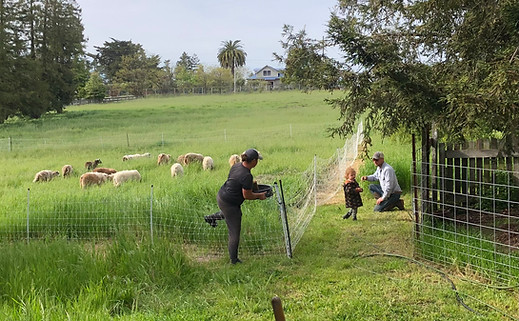
JOURNEY INTO REGENERATIVE DESIGN

PLACE
About The Petal
The intent of the Place Petal is to realign how people understand and relate to the natural environment that sustains us. The built environment must reconnect with the ecology of place and the unique characteristics found in every community so that story can be honored, protected and enhanced. The Place Petal clearly articulates where it is acceptable for people to build, how to protect and restore a place once it has been developed, and how to encourage the creation of communities that are once again based on the pedestrian rather than the automobile. In turn, these communities need to be supported by a web of local and regional agriculture that encourages the consumption of local, fresh and seasonal food.

Restoring the Land
This is a photo of the orchard and its only remaining fruit trees taken after we moved in September 2020. Our property was most recently used for grazing sheep. Historically the land was probably farmed or ranched using practices that degraded the soil. Currently our sandy loam soil is populated with annual grasses, lacks organic matter and is subject to erosion from wind and water.
In late 2020 we started by mulching at the base of the existing fruit trees and planting new trees, shrubs and flowers. We are applying permaculture principles in order to build a food forest. Mulching increases soil organic matter. Trees, shrubs and perennial plants provide us with food while stabilizing the soil. Flowers attract pollinator insects. As of now we have more than two dozen fruit and nut trees, most of them still young.
About one third of the property in the north will be restored to Oak Savanna which is the original pre-colonial ecosystem of our area: perennial grasslands dotted predominantly with a variety of oak species as well as pine, manzanita and various berry-producing shrubs. Rows of trees will run along the elevation contour lines with perennial grasses planted in the alleys. These grasses are native to our region and are able to resist erosion of the topsoil. Several horses will live on the property in paddocks. Extremely limited, rotational grazing will allow the horses to roam a little but keep the horses from degrading the grasslands.
Farming
In the future 20% of our land will be dedicated to farming. We will extend the orchard by planting more fruit and nut trees across the southside of the property. Raised vegetable gardens will be put north of the house, close to the kitchen.
In 2023 we partnered with the owners of a small and local meat producer called Fox Sparrow Farm to host their sheep for rotational grazing in our pasture (see photo).



Permanent Preservation of Land
To comply with the LBC we must sponsor the permanent preservation of land equivalent to the size of our project area, using an approved land trust organization. Alternatively, project members can volunteer 100 hours in support of the mission of an organization that engages in ecological restoration and land management, We will be volunteering for a local, non-profit organization called Point Blue Conservation Science.
Reduce Transportation Impact
In the beginning of 2021, we bought an electric car. We try to only use the electric car and minimize the use of a second gas-powered hybrid car. We are also working from home as much as possible to further reduce our transportation impact.